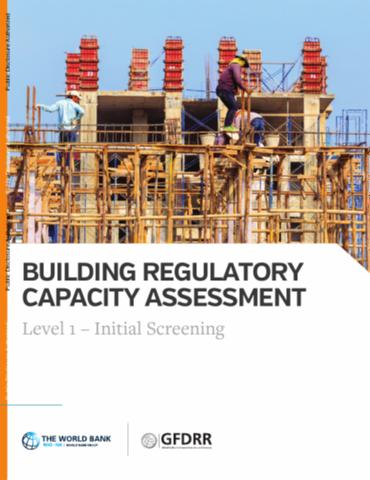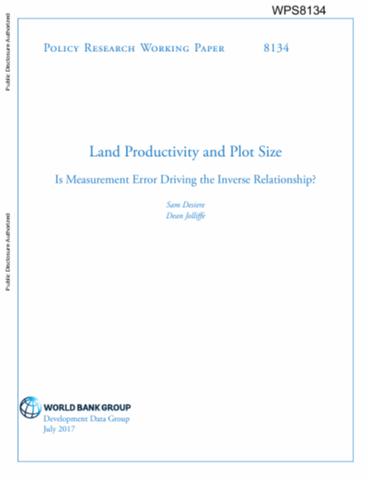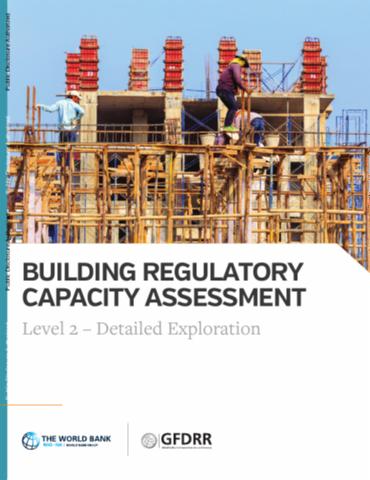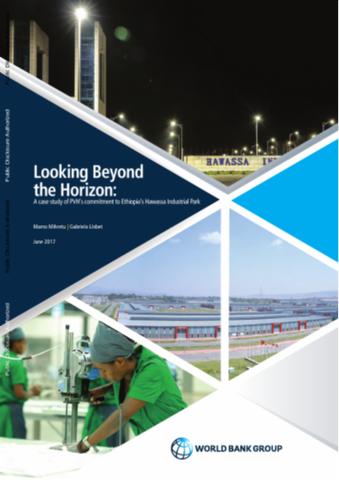The World Bank is a vital source of financial and technical assistance to developing countries around the world. We are not a bank in the ordinary sense but a unique partnership to reduce poverty and support development. The World Bank Group has two ambitious goals: End extreme poverty within a generation and boost shared prosperity.
- To end extreme poverty, the Bank's goal is to decrease the percentage of people living on less than $1.25 a day to no more than 3% by 2030.
- To promote shared prosperity, the goal is to promote income growth of the bottom 40% of the population in each country.
The World Bank Group comprises five institutions managed by their member countries.
The World Bank Group and Land: Working to protect the rights of existing land users and to help secure benefits for smallholder farmers
The World Bank (IBRD and IDA) interacts primarily with governments to increase agricultural productivity, strengthen land tenure policies and improve land governance. More than 90% of the World Bank’s agriculture portfolio focuses on the productivity and access to markets by small holder farmers. Ten percent of our projects focus on the governance of land tenure.
Similarly, investments by the International Finance Corporation (IFC), the World Bank Group’s private sector arm, including those in larger scale enterprises, overwhelmingly support smallholder farmers through improved access to finance, inputs and markets, and as direct suppliers. IFC invests in environmentally and socially sustainable private enterprises in all parts of the value chain (inputs such as irrigation and fertilizers, primary production, processing, transport and storage, traders, and risk management facilities including weather/crop insurance, warehouse financing, etc
For more information, visit the World Bank Group and land and food security (https://www.worldbank.org/en/topic/agriculture/brief/land-and-food-security1
Resources
Displaying 106 - 110 of 4907Building Regulatory Capacity Assessment
Urbanization is simultaneously a major driver of development, wealth creation, and poverty reduction, as well as one of the most pressing challenges of the 21st century. The building regulatory capacity assessment provides an important contribution to help cities and project managers working with development agencies to implement this last priority by offering a new resource to assess building and land use regulatory systems, and facilitate the collection of critical information about the building regulatory framework in any given city or country.
Land Productivity and Plot Size
This paper revisits the decades-old puzzle of the inverse plot-size productivity relationship, which states that land productivity decreases as plot size increases. Existing empirical studies on the inverse plot-size productivity relationship define land productivity or yields as self-reported production divided by plot size. This paper considers an alternative approach to estimating yields based on crop cuts.
Building Regulatory Capacity Assessment
Urbanization is simultaneously a major driver of development, wealth creation, and poverty reduction, as well as one of the most pressing challenges of the 21st century. Urbanization can and should be embraced as an opportunity to reduce poverty.
Mission Impossible?
Research has provided robust evidence for the use of GPS technology to be the scalable gold standard in land area measurement in household surveys. Nonetheless, facing budget constraints, survey agencies often seek to measure with GPS only plots within a given radius of dwelling locations. Subsequently, it is common for significant shares of plots not to be measured, and research has highlighted the selection biases resulting from using incomplete data.
Looking Beyond the Horizon
The story of how the PVH Corp. (referred to throughout this document as PVH) came to leada group of its top suppliers to build factories and a fabric mill in Ethiopia’s Hawassa IndustrialPark (HIP) is the study of a strong collaboration between a private company looking to optimizeits business model and a government aiming to transform its economy through global strategic repositioning.










